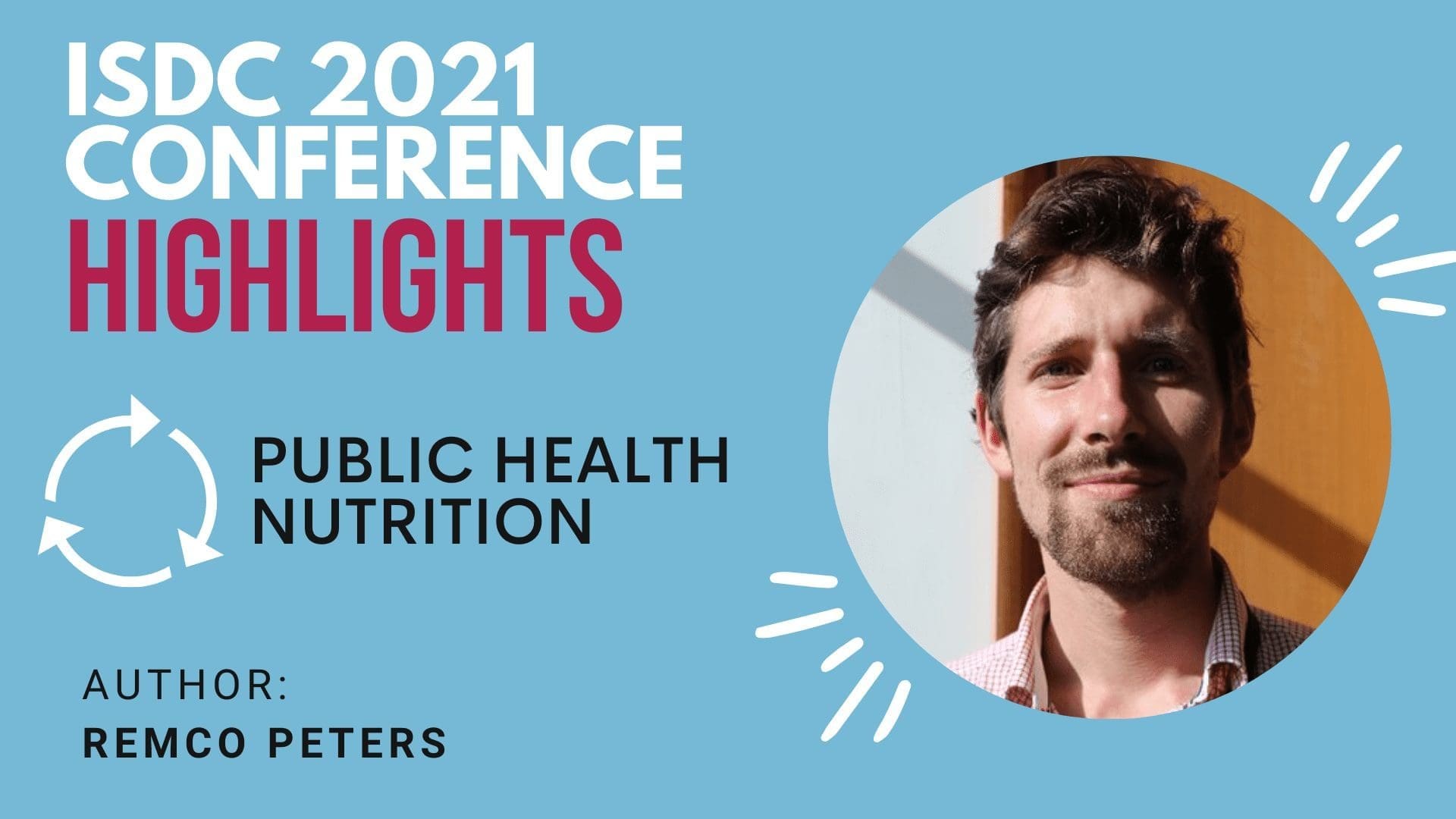The International System Dynamics Conference (ISDC) convenes practitioners who demonstrate what’s new and developing in their fields with System Dynamics. This section of the WiSDom Blog, “Conference Highlights,” asks system dynamicists to spotlight key presentations and innovations presented at the conference.
Note: Some links within the text take you to the conference website. You must login to the site to see these linked materials. Access to the website will be restricted in September, so make sure you check out the resources before it’s too late.
– Conference Highlights Editorial Team: Saras Chung, Will Glass-Husain, Jack Homer, Sara Metcalf, and Remco Peters with coordination by Christine Tang
This highlight by Remco Peters spotlights the work of addressing Public Health Nutrition topics with system dynamics. Special thanks to Will Glass-Husain for editorial support.
Food “Wickedness”
There is a growing consensus in public health nutrition that interventions acknowledging the complex and dynamic nature of issues such as undernutrition, increasing obesity rates, and unhealthy dietary behaviours are needed. There is also a realization that potentially effective interventions have unintended consequences, widening inequities and exacerbating forms of malnutrition. System Dynamics is gaining prominence in public health nutrition for taking these factors into account.
As a newcomer to this approach, the 2021 International System Dynamics Conference (ISDC) was a great opportunity for me to learn more about System Dynamics and examine current developments in the public health nutrition field. A variety of ISDC Presentations on public nutrition captured complexity, explored co-creation to identify leverage points, and considered unintended consequences for the field.
Capturing complexity
I started my conference on a promising note with Abigail Roche’s poster presentation: “Modeling Cyclic and Temporal Relationships of Food Insecurity and Diet Quality for Nutrition Equity Policy Design.” Roche’s preliminary model aimed to highlight the effect of stress on eating patterns that could lead to the accumulation of chronic disease over time within historically redlined neighbourhoods. Her approach was a great example of the utility of System Dynamics in transitioning from a mental map to a tangible model for relevant stakeholders.
Raquel Froese Buzogany (Mapping Interactions Between Food Security and Poverty) Fernando Redivo (Modeling Household Level Food Security with System Dynamics) then showcased how causal loop diagrams and stock flow diagrams can be applied to capture the dynamic and complex nature of phenomena of food security. Their models presented a narrative in an accessible manner, which could be helpful for stakeholder engagement. This is an improvement on many other food and obesity models that acknowledge complexity but lack a clear set of actions that can be taken by policy-makers.
Co-creation of Models to Identify Leverage
I was initially drawn to system dynamics by the participatory element of community-based modelling. Bringing together a diverse group of stakeholders to co-create and own models can be powerful. A key part of this is the process of building a common language to identify determinants and solutions which are best suited to their own context. The panel session on Food and Health and the presentation by Guus Luijben in the WIP session on Human Behavior exemplified this aspect of System Dynamics.
Guus Luijben’s research, “Community-Based System Dynamics for Shifting Diets for a Sustainable Food Future,” involved group model building (GMB) sessions with experts and younger adults. Their goal was to develop policy measures to reduce meat consumption as a response to the worrying gap between the desired and actual meat consumption among young Dutch adults. Using co-created causal loop diagrams, they identified that social eating norms and the relatively cheap price of meat were important factors driving this gap. They proposed an intervention to increase community awareness of the negative effects of meat on the environment–a shift from psychosocial factors to contextual factors (upstream determinants) in promoting healthy eating behaviour. This was a great example of engaging a target group to identify effective intervention and policy levers.
In the Food and Health parallel session, Jacqueline Davison, Mark Heffernan and others shared a model developed in response to the New South Wales (Australia) Government’s priority to make a five percent reduction in childhood overweight and obesity prevalence by 2025. This session enforced the utility of participatory system dynamics to inspire collaboration with different state actors to address obesity. It was encouraging to hear that the state actors were eager to continue with the developed model.
Unintended Consequences
The next parallel session by Charles Nicholson discussed effective interventions to increase fruit and vegetable consumption in urban Kenya. Nicholson’s team assessed the causes for declining fruit and vegetable consumption through group model building with key decision makers in the value chain and the development of a quantitative model.
This presentation included a couple of highlights for me: First, they identified that the participating organisations had a consumer-centric focus, suggesting that the participant pool should ideally be widened. Second, this session showcased the utility of system dynamics to identify unintended consequences. The researchers identified that increases in farm yields potentially has the largest dynamic effect on fruit and vegetable consumption. However, during this process they also identified that potential interventions would negatively affect the livelihood of farmers in the process of increasing yield. These kinds of insights (based on participatory modeling) are what make feedback loops shine for me.
Conclusion
This year’s conference gave me a sweet taste of the wide range and utility of the system dynamics toolkit available to address wicked public health nutrition issues. Presenters shared insights with attendees from their own work and also received helpful feedback and comments after the sessions. In light of current events, my expectation is that Food and Health will be even better represented in next year’s conference. I encourage those active with System Dynamics in the public health nutrition field to present and share their work with others on this platform next year. I hope I’ll be able to do so in the near future.
Remco Peters
rpj_peters@outlook.com
Remco is a Research Associate at the School for Policy Studies at the University of Bristol. His research interests focus on social determinants of diet, nutrition and well-being and systems thinking approaches to malnutrition.


